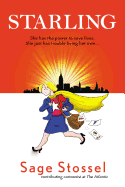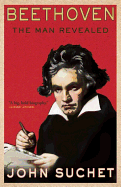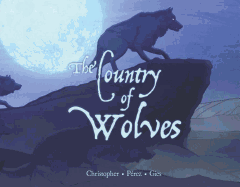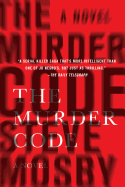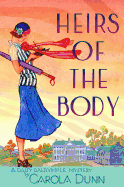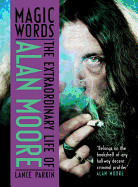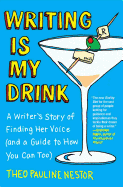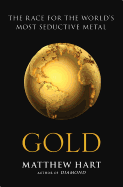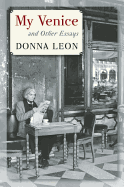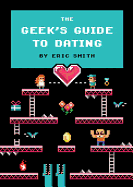I love giving books--to friends, family, acquaintances, occasional strangers. On Indies First Day, November 30, my husband, Paul, and I visited five bookstores and bought 27 books. We had a short list of gift books, but ended up with many more because booksellers (and authors) hand-sold so well, and we found unexpected treasures. Here's some of what I bought on that day to give away:
Leif Enger's marvelous classic Peace Like a River. I cannot count how many copies of this I have given since 2001. An asthmatic boy, an outlaw older brother, a tomboy sister and miracles--faith and family and adventure.
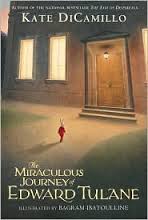 I picked up a copy of The Miraculous Journey of Edward Tulane by Kate DiCamillo, wondering if it was as wonderful as I had remembered. I paged through, read the last two pages, teared up, and said "Yes. Yes!" Just like Edward.
I picked up a copy of The Miraculous Journey of Edward Tulane by Kate DiCamillo, wondering if it was as wonderful as I had remembered. I paged through, read the last two pages, teared up, and said "Yes. Yes!" Just like Edward.
Our reviewer Valerie Ryan loved Monument Road by Charlie Quimby so much she asked for space for a longer review. A year and a day after his wife's cremation, Leonard Self prepares to throw her ashes, and himself, off her favorite overlook. Valerie said, "It's an exquisite story; it is a joy and a wonder and a tour de force of authorship."
Me Before You by JoJo Moyes. A sheltered young woman becomes a caretaker for a sarcastic quadriplegic man. Romance, wit and an exploration of the right of a disabled person to end a life he can no longer control.
Then She Found Me by Elinor Lipman. Overbearing Bernice descends on her quiet daughter, whom she gave up for adoption 36 years ago. It was hard to choose--every Lipman novel is absolutely swell, and I learned a long time ago to prolong the last few pages, because she writes the best endings.
Paul was enthusiastically hand-sold Stacy Horn's Imperfect Harmony, an account of the author's experience and joy in choral singing. He is now looking for a choir to join. --Marilyn Dahl, editor, Shelf Awareness for Readers
Brown Dog: Novellas
by Jim Harrison
Brown Dog, a new collection of novellas, features Jim Harrison's signature character Brown Dog. He's a mixed-race orphan loner who lives in various handmade shacks amid the forests and rivers below the shores of Lake Superior in Michigan's Upper Peninsula, a place where "if you don't like pan fishing, ice fishing, snowmobiling or applying mosquito dope you're out of luck." Add drinking beer and schnapps, raising dogs, cooking from scratch and chasing women, and you pretty much have Brown Dog's indolent days. He is one of the great characters in American literature--on a par with Twain's Huck Finn or Hemingway's Nick Adams.
Among the six novellas in Brown Dog, only "He Dog" appears for the first time and neatly balances 1990's "Brown Dog," which opens the collection. In it, the rakish character discovers a dead Indian rumored to be his father while illegally diving for shipwreck loot in Lake Superior. Although B.D. most often searches for sex or an untrammeled trout stream, he also speculates on his unknown parents. In "He Dog," he finally discovers something of their story from the only family he has left: Gretchen, the lesbian mother of his daughter. He is mystified by Gretchen's lack of sexual interest in him despite his continuing mid-50s priapic lust, but accepts that her love and their daughter are all he's going to get--that, a place to build a shack on her land and an amateur painting of his parents given to him by his 88-year-old uncle Delmore.
If age hasn't diminished his appetites, at least the restless Brown Dog finds some peace. "The love of a woman and your own cabin sounded dandy," he realizes. --Bruce Jacobs
Discover: In this omnibus collection of Brown Dog novellas, Harrison's bawdy character pursues women, booze, shelter, trout streams--and the truth.
The White Lie
by Andrea Gillies
In The White Lie, the first novel from memoirist Andrea Gillies (Keeper), one Scottish family has more than its fair share of secrets--and the lies are tearing them apart.
While he's unsure about "all the rest of it," narrator Michael Salter knows for certain he is dead. The 19-year-old son of the owners of the once grand Peattie House, Michael disappeared into the dark waters of the nearby loch during a struggle with Ursula, his aunt. At least, that's the story told by Ursula and corroborated by Alan, the grown son of the estate's handyman-gardener. Questions soon arise: Why would Ursula, who suffers from acute aquaphobia, have gone out on the loch in a boat? Is Alan, long assumed by the family to be Michael's father, trustworthy, or does he hold a grudge against Michael's mother, Ottelie, who never acknowledged his paternity? To protect the eccentric and deluded Ursula, the family members agree not to involve the police. To the outside world, Michael appears to have vanished without a trace; there are rumors of suicide.
A decade later, the family gathers for a birthday celebration. Truth and fiction blur as the family tries to decode its history and finds that the cover-up of Michael's reported death isn't the first of their lies. The true white lie goes back to the death of another scion of the family many years past.
Although set in modern times, Gillies's family drama with its aristocratic setting and myriad intricacies will intrigue Downton Abbey fans. Moments of unexpected levity buoy the overall sadness of the plot, as Michael uncovers the truth about his demise. Readers will raise eyebrows at the scandals of a deliciously dysfunctional dynasty. --Jaclyn Fulwood
Discover: Ten years after the alleged drowning of their heir apparent, the depth of the Salter family's deceit finally comes to light.
Mystery & Thriller
The Murder Code
by Steve Mosby
The Murder Code, British author Steve Mosby's American debut, opens with the brutal but seemingly straightforward bludgeoning of a young woman on her way home from work. Detective Andrew Hicks immediately looks to her abusive ex, because he knows all murders are committed for reasons--bad reasons maybe, but reasons that make sense at the time to the killer. But when the bodies start piling up--clearly the work of the same hand or, more precisely, the same hammer--Hicks is forced to reconsider his theory. And when he receives a letter from the murderer, Hicks must confront everything he's understood for years about the reasons people kill each other.
Story lines overlap and tangle tantalizingly in Mosby's capable hands. The reader glimpses teasing flashes of various characters and their backgrounds before returning to Hicks's increasingly troubled life. His pregnant wife knows there's something Hicks isn't telling her, but doesn't know what, any more than the reader does. Something disturbing in his past threatens to resurface.
While other sympathetic characters are briefly sketched, Hicks is very much at the heart of this psychological thriller. Mosby expertly spools out and retracts details, keeping the reader breathless with anticipation as the body count rises and Hicks asks himself questions he thought he'd answered long ago. The Murder Code offers not only a surface-level mystery to be solved, but the deeper mystery of how the pieces fit together--and the central question of whether innate evil is real. --Julia Jenkins, librarian and blogger at pagesofjulia
Discover: A series of murders force a seasoned detective to reexamine his understanding of evil.
Heirs of the Body: A Daisy Dalrymple Mystery
by Carola Dunn
The title of Carola Dunn's Heirs of the Body refers to an English legal term pertaining to the passing of property to next of kin. Lord Edgar Dalrymple--a childless former schoolmaster--inherited his title and estate from his cousin Daisy Dalrymple Fletcher's father and brother. Now the time has come to find a male relative to become Lord Edgar's successor. Through a worldwide search, four possible claimants emerge. In order to vet the candidates, Lord Dalrymple enlists Daisy's help and proposes the whole family gather to celebrate his 50th birthday and meet the potential beneficiaries at the family estate.
"How difficult can it be to tell the fake heirs from the real one?" remarks Daisy's Scotland Yard inspector husband, Alec, unaware that the lineup of would-be heirs is diverse: a diamond merchant from South Africa, a hotel manager with French connections, a boy from Trinidad and a Jamaican sailor who is missing in action and has a pregnant wife. Who are these people and what lengths will they go to in order to secure an inheritance? Might they even conspire to commit murder?
Heirs of the Body marks Daisy Dalrymple's 21st adventure. Dunn has kept her affable heroine--a writer turned amateur sleuth in 1920s England--lively and engaging throughout the traditional whodunit series. As Daisy's aristocratic family become embroiled in another cozy mystery, Dunn offers a strong sense of place, tight and suspenseful plotting and well-defined motives--all serving to enrich the entertaining puzzle at the heart of the story. --Kathleen Gerard, blogger at Reading Between the Lines
Discover: Trouble ensues when an aristocratic British family gathers to solve the mystery of who will inherit the title and estate of an aging lord.
Graphic Books
Starling
by Sage Stossel
Sage Stossel, a contributing cartoonist at the Atlantic and children's book author (On the Loose in Boston), soars onto the graphic novel scene with Starling.
Like many young women, Amy Sturgess works hard to get ahead in her career while wondering if her love life will ever pick up. But Amy is not an average person: thanks to toxic waste her mother encountered while pregnant, Amy possesses amazing strength, incredible speed and the ability to fly. Unbeknownst to her boss and coworkers, Amy moonlights as the masked vigilante Starling.
Her tendency to dash out of meetings has everyone at her ad agency convinced she's afflicted with a gastric disorder. To complicate matters, an underhanded coworker is trying to leverage Amy's absences to steal her accounts. Her personal life is in even worse shape: her younger brother, Noah, is crashing at her apartment, and while her ex wants to try again, he just got engaged to a wonderful woman. Then Amy finds out Noah's involved in shady dealings. If she's going to save her brother, land a big account at work and straighten out her love life, Amy's going to need help.
Luckily, former UFC fighter turned gambling den owner Matt McRae is a huge admirer of Starling--and Amy, too. With his heart of gold and her muscles of steel, they might find a way to save the day.
Stossel's soft washes of color and zippy dialogue make Starling more than just a superhero comic. Amy's juggling of her family, personal and work lives echoes every modern woman's struggle to have it all. --Jaclyn Fulwood, youth services manager at Latah County Library District and blogger at Infinite Reads
Discover: In Stossel's debut graphic novel, a modern career girl struggles to balance her personal and professional lives with a side gig as a superhero, with hilarious and uplifting results.
Food & Wine
Bold: A Cookbook of Big Flavors
by Victoria Wise and Susanna Hoffman
Susanna Hoffman and Victoria Wise have helped transform the U.S. food scene, through the restaurants they've been associated with (most notably Chez Panisse) and their cookbooks; their newest collaboration, Bold, is a celebration of that transformation.
Hoffman and Wise use the melting pot metaphor about American culture to describe their approach to cooking. Their recipes are traditional in the broadest sense, drawing on sources as diverse as Cuba, Louisiana, the Middle East, the Mediterranean and the U.S. steakhouse. They layer flavors in unexpected ways without succumbing to preciousness: lamb chops in a cola glaze, flank steak with a pomegranate marinade, potato and celery root latkes with a pear compote. Their recipes offer comfort food with a twist.
Bold is more than a cookbook. Its pages are larded with food history: from cod's role in European expansion through the introduction of yogurt to the U.S. by Armenian immigrants to the creation of Campbell's Soup. Hoffman and Wise consider the frequently surprising impact of different ethnic groups on American cuisine. (General Tso's chicken, anyone?) They tell the story of specific ingredients, including Tabasco sauce, rye whiskey, olives and peanuts. Each recipe is introduced with a tidbit to put it in culinary context.
Thanks to its combination of storytelling and well-written recipes, Bold will appeal both to people who read cookbooks as if they were novels and to adventurous cooks. --Pamela Toler, blogging at History in the Margins
Discover: U.S. melting pot cuisine, updated for the modern kitchen.
Biography & Memoir
Beethoven: The Man Revealed
by John Suchet
Like Fielding's Tom Jones, John Suchet's Beethoven: The Man Revealed is a picaresque ramble complete with "spoiler" chapter sub-headings such as "Beethoven holds the most important concert of his life, and is offered a job"--except, of course, his subject is a real-life genius, not a fictional rake. Suchet is a retired British news anchor whose lifelong passion for everything Beethoven has led to several books, including the 1,500-page The Last Master. In this more manageable biography, Suchet distills his scholarship in a way that captures both Beethoven's prodigious talent and his struggles with family, money, love, health and fame.
Suchet's conversational approach allows him to present the known details of Beethoven's life while speculating effectively on the unknown. For example, he re-creates Beethoven's meeting with Goethe, which prompted the latter to describe the composer as "an utterly untamed personality, not necessarily wrong if he regards the world as detestable, but certainly not making it any more pleasant either for himself or others by thinking so." Suchet even proclaims "Für Elise" "quite possibly the single best-known piece of piano music ever written by anyone" based on its ranking as the world's most downloaded ringtone.
When he describes the approaching end of Beethoven's difficult life in the aptly titled chapter "Frightening the Oxen," we see Beethoven in the Gneixendorf countryside "fraught, tense, in ill-health, in pain, yet... waving his arms, singing, and shouting [as] musical ideas were forming in his mind"--just as we want to imagine the last months of an artistic genius. --Bruce Jacobs, founding partner, Watermark Books & Cafe, Wichita, Kan.
Discover: A colloquial, picaresque biography of Beethoven by a passionate lifelong student of the man and his music.
Magic Words: The Extraordinary Life of Alan Moore
by Lance Parkin
Alan Moore is probably best known to comic book fans for the series Watchmen, and possibly also for his acclaimed run on Swamp Thing. As Lance Parkin points out in Magic Words, however, those two comics--and the dystopian V for Vendetta--were produced almost three decades ago, and are far from fully representative of Moore's work.
Parkin, a British writer specializing in science fiction and pop culture, goes back to Moore's childhood in the Midlands town of Northampton (where he still lives), teasing out some unexpected influences. There's a strong focus on Moore's early work in British comics, where his technique of juxtaposing the images in comic book panels in "ironic counterpoint" to their captions was honed to the fine point of Watchmen. Even as that book was transforming the comics market, though, Moore's relationship with its publisher was falling apart; Parkin addresses this and many other acrimonious disputes with clear sympathy for Moore, but also an evenhanded recognition that the other parties are rarely acting in bad faith. That combination of respect and skepticism also characterizes the discussion of Moore's self-transformation into a ceremonial magician whose occult philosophies have informed several comic books (as well as performance art pieces and a long-anticipated novel). Some fans might want to see more discussion of the content of the comics, but Magic Words is a biography, not a literary study. As such, it helps us recognize why Alan Moore matters while leaving plenty of room to discover his work for ourselves. --Ron Hogan, founder of Beatrice.com
Discover: Thirty years ago Alan Moore revolutionized comic books, then began creating even more remarkable works.
Writing Is My Drink: A Writer's Story of Finding Her Voice (and a Guide to How You Can Too)
by Theo Pauline Nestor
Theo Pauline Nestor always wanted to be a writer. But she struggled to find confidence and her writing voice for many years, through two kids and several career changes, before publishing How to Sleep Alone in a King-Size Bed, a memoir about her divorce and its aftermath. In Writing Is My Drink, Nestor returns to memoir with tales from her childhood, formative years and journey toward publication, and confessional forays into her parents' alcoholism and her more embarrassing moments as an aspiring writer. Readers and writers will appreciate nods to Terry Tempest Williams, Natalie Goldberg and Frank McCourt, whom Nestor temporarily confused with her father.
Writing Is My Drink is also part instruction guide. Each chapter finishes with a short "Try This" piece that offers writing exercises, lists to make and concepts to keep in mind. She coaches when to push oneself and when to be forgiving, and shares the sad news that rejection and bad writing are integral parts of publication and good writing. Now an instructor in memoir writing, Nestor is well placed to offer such advice, and despite her convoluted journey--or perhaps because of it--she has a great deal of wisdom to share with her students.
Writing Is My Drink is by turns instructive, funny, poignant and deeply personal. Nestor's voice is informal and occasionally self-deprecating, but one of the central lessons she has learned and wants to share is that of trusting oneself. Her story will be an inspiration to readers who seek self-expression. --Julia Jenkins, librarian and blogger at pagesofjulia
Discover: A writer's journey, written as a guide for aspiring and developing writers.
History
Gold: The Race for the World's Most Seductive Metal
by Matthew Hart
Gold remains a constant in a sea of global economic change--and has mirrored the most dramatic changes in human development. Matthew Hart's Gold begins deep below the surface of the African veld, where impoverished men mine the metal to feed the insatiable demands of those who covet it. From there, the story travels back to Asia Minor in 635 B.C. and 16th-century Peru, where bright and beautiful accessories created as religious relics honoring kings and gods became emblems of social status and possessions of the commercially elite. Spanish conquistadors plundered the seemingly endless supplies of Incan gold, creating the West's first gold rush.
With the influx of so much gold onto the European continent, it soon replaced other metals as the backing for paper money and earned a reputation as the "god of fiscal rectitude." When the next gold rush started at Sutter's Mill in California in 1848, it fueled another long round of plunder and speculative runs that threatened to upend global financial security.
Hart treats each boom, panic and shock as an intrigue more befitting an espionage or mystery novel than economic or social history. Yet it is his riveting interviews with the men and investment companies who continue to dig into the earth to meet today's speculative gold scramble that provide the most insight into how this precious metal, a historical symbol of religious reverence, has marred the human spirit over the centuries. --Nancy Powell, freelance writer and technical consultant
Discover: The author of Diamond takes on humanity's love affair with gold.
Essays & Criticism
My Venice and Other Essays
by Donna Leon
Well known as the author of the Commissario Guido Brunetti mystery novels, American Donna Leon has lived in Venice for 30 years and knows its vagaries and delights in and out.
The essays in My Venice are filled with her pointed observations, humor and insight. Her rant on Saudi Arabia--she taught there for a year--is filled with trenchant comments about the country's attitude toward women, who are seen as inferior in every way and treated as such. She then repeats that essay's mantra, ironically: "But, darlings, it's got lovely beaches, and the local people are so friendly."
She describes Venice as "a provincial town of fewer than sixty thousand inhabitants where one of the chief sources of entertainment is gossip and where, consequently, there are no secrets." This reality, she's concluded, is a refuge from the nonsense of the Internet and "communicating" with people we will never see.
In the last section, there are two very funny set pieces about her war with--and against--e-mail and an afternoon with the Barbara Vine side of Ruth Rendell (the dark side). Over lunch, they debate various delightful ways of committing murder, wherein Vine says: "I have to admit I have a great weakness for strangling. There's something so tactile and personal about it." The essay ends with: "Tell me, Ruth, before we order dessert, have you ever watched an autopsy?"
Leon's great intelligence and wit come through in every one of these essays, whether concerned with garbage collection or music. In reading these first-person pieces, it is clear that the irresistible Commissario Brunetti is channeling Donna Leon. --Valerie Ryan, Cannon Beach Book Company, Ore.
Discover: A lively collection of essays giving the reader insight into the writer behind the Commissario Guido Brunetti mysteries.
Psychology & Self-Help
The Geek's Guide to Dating
by Eric Smith
The geek is making a comeback, and in a big way. "What was once a derogatory term," writes Eric Smith, "has now been taken back by a community proud to wear the title." And not just one community: there are gaming geeks, Apple geeks, math geeks and many more. The Geek's Guide to Dating is aimed at them all, offering tips and advice for finding--and keeping--the perfect romantic companion.
Smith starts out by helping the reader--affectionately referred to as "Player One" throughout the book--identify his or her proper geek category before moving on to how to meet a potential partner online or IRL ("in real life"). Subsequent chapters address everything from asking her out to preparing for the date to maintaining a relationship beyond the first date; every section is peppered with cultural references that make Smith's advice accessible and enjoyable to read--a welcome break from the dry how-to guide style. These nods to Princess Peach, WoW guilds, Han Solo's clothes and Bender's relationship to the space ship in Futurama are wide-ranging enough to appeal to geeks of any variety.
The Geek's Guide to Dating skews toward straight males seeking female companions, but most of Smith's advice can be applied to any gender or sexuality--and Smith's clever inclusion of the best of geekdom is a delight to read from start to finish. --Kerry McHugh, blogger at Entomology of a Bookworm
Discover: A quirky, clever guide to dating for geeks of all varieties, from sci-fi fans to Dungeons & Dragons players and everyone in between.
Children's & Young Adult
The Country of Wolves
by Neil Christopher, illus. by Ramón Pérez
This sophisticated picture book may resemble a graphic novel in style, but it unwinds with a storyteller's cadence and pacing.
Based on the animated film Amaqqut Nunaat: The Country of Wolves, released in 2011, the book uses images derived from film stills, smoothly integrated into the story. Menacing, lupine expressions on human faces appear on the endpapers, and the title page depicts a pack of wolves racing with a full moon as backdrop--a foreshadowing of the conflict to come. The moon's glow seems to light the vast Northern scene where caribou roam: "In the winter, our land is a place of ice, snow, wind, and darkness." Two brothers set out to hunt food for their village and find themselves adrift on an ice floe. They finally land on an unfamiliar beach, and discover a village. Ramón Pérez's artwork shows an igloo, lit from within, that perfectly simulates light shining through ice, as the younger brother follows "strange noises" to ask for help. The artist contrasts this setting with the subtler glow of a "qulliq" that heats a wizened woman's dwelling where the older brother goes. Her mysterious aura and cryptic words ("The land has never been safe for your kind") heighten the suspense, as the siblings each do battle in the Country of Wolves in an attempt to return home.
Neil Christopher's spare, poetic text and Pérez's chilling illustrations--especially the sequence of the village inhabitants' transformation into wolves--make this a spinetingling ghost story appropriate for older children. --Jennifer M. Brown, children's editor, Shelf Awareness
Discover: A haunting retelling of a traditional Inuit story featuring two brothers lost in a strange frozen land.
Dog Days
by Karen English, illus. by Laura Freeman
The first in what promises to be a gentle and fun early chapter book series, the Carver Chronicles, introduces Gavin, a new third grader at Carver Elementary. As the book opens, Gavin struggles to hit his stride in his new school (also the setting for Nikki & Deja series). So far, he has succeeded in making only one friend: Richard, who chose Gavin for his kickball team, so he must be a "nice guy," but he takes advantage of Gavin's vulnerability.
Gavin, eager to impress Richard during a play date, invites him to snoop in his older sister Danielle's room. One broken snow globe and a lot of yelling later, Gavin finds himself saddled with an unpleasant task: he must earn the money to pay back Danielle by walking his Aunt Myrtle's yappy, pink-bow-wearing Pomeranian--every day after school, for a week. Although Gavin survives the humiliation of dog-walking, he fails to realize the fundamental problem: Richard is no friend at all. Readers will hope that he'll wise up as the series progresses.
At times the story drags a bit, but is always rescued by Karen English's engagingly simple, authentic writing, as in this excerpt from Gavin's journal: "Now I have to walk this ugly dog every day. A dog that's all the time giving me mean looks and showing her teeth and looking like she would like to bite me." A great find for young readers adjusting to a new neighborhood or school, and for any newly independent reader. --Allie Jane Bruce, children's librarian, Bank Street College of Education
Discover: This gentle early chapter book features simple, authentic writing, a vulnerable hero and a friend who's no friend at all.
These Broken Stars
by Meagan Spooner and Amie Kaufman
This first book in the projected These Broken Stars trilogy opens like a historical romance, but is at heart a sci-fi space opera.
Haughty teenage society queen Lilac LaRoux meets rising military star Major Tarver Merendsen aboard the Titanic-like spaceship, the Icarus, and the novel unfolds through their alternating first-person narratives. Sparks fly, but Lilac spurns Tarver's advances because--as the daughter of "the most powerful man in the galaxy"--there are expectations about the company she keeps. That becomes irrelevant, however, when an accident destroys the Icarus, throwing Lilac and Tarver together in an escape pod that crashes on an unknown planet. The cause of the crash and the identity of the strangely deserted planet are mysteries. While they hope for rescue, Tarver's military training keeps them alive on the unpopulated planet that has few resources. Neither Lilac nor Tarver are what they seem, with their true natures veiled by their boilerplate exteriors. Thrown together in a struggle to survive, Lilac and Tarver discover the hearts they've worked so hard to hide and find a love that crosses space and time.
First-time author Amie Kaufman joins Meagan Spooner (the Skylark Trilogy) in a collaboration that yields a lightning pace, multidimensional characters and a gripping science-fiction plot with a mystery at its core. This launch title wraps up satisfyingly but will leave readers eager for the next episode. Give this to fans of Beth Revis's Across the Universe series. --Jessica Bushore, former public librarian and freelance writer
Discover: Two teens on an unknown planet fight to discover and keep their love when everything threatens their survival.
| Advertisement Meet belle bear! |


